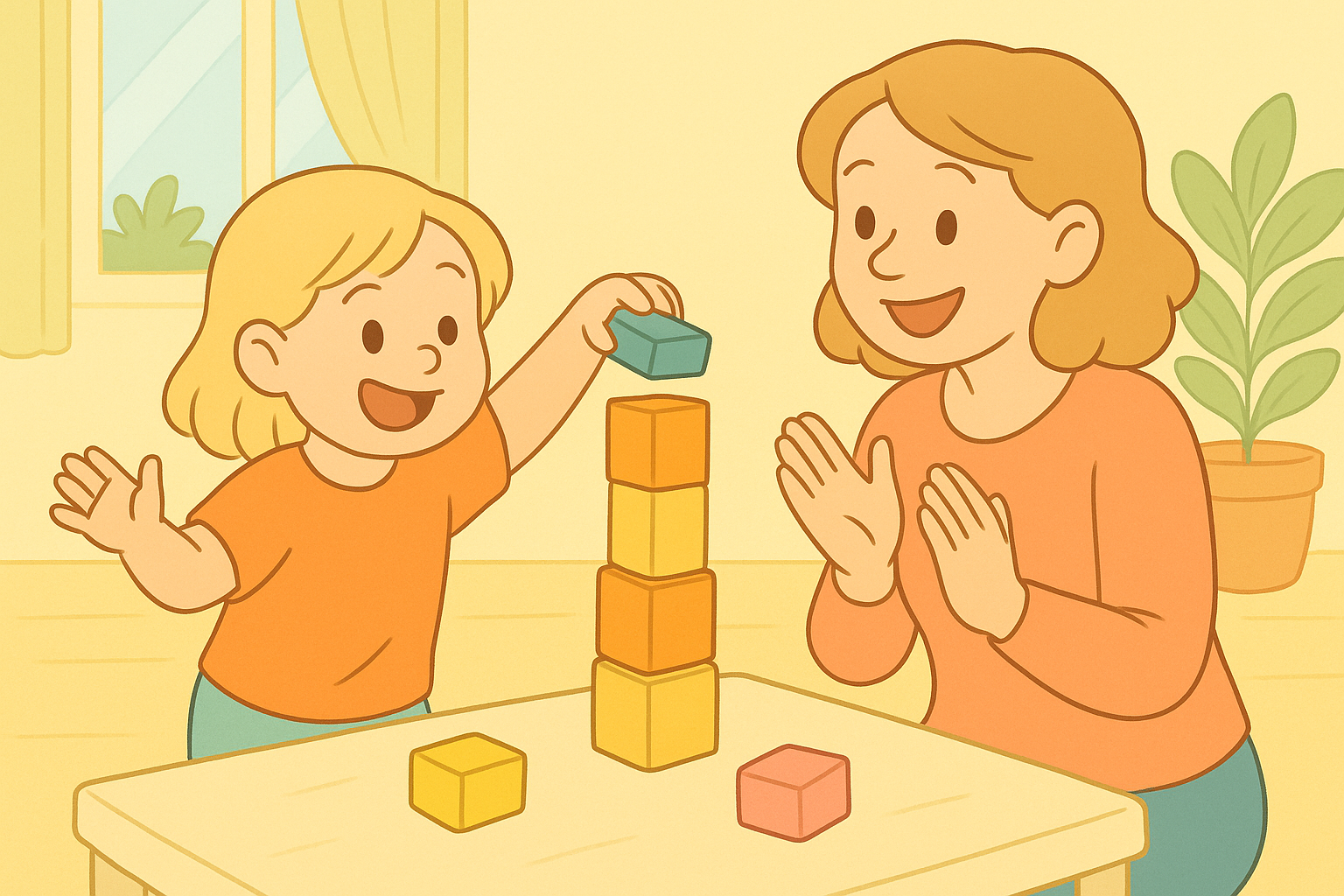How to Build Confidence in Early Learners
How to Build Confidence in Early Learners
Why Confidence Comes Before Academics
Long before children master the alphabet or count to ten, they need to believe in something more powerful—themselves.
Confidence isn’t something you can teach through praise alone. It grows through experience, trust, and small moments of mastery that add up to big self-belief.
What Confidence Looks Like in Early Childhood
Confidence isn’t about being loud, outgoing, or always right. It’s about a quiet belief in “I can try,” even when things are uncertain.
Confident early learners:
Approach new challenges with curiosity.
Keep trying after a mistake.
Take pride in effort, not just outcomes.
Ask for help when they need it.
Celebrate small wins without comparing themselves to others.
These skills—persistence, self-trust, and resilience—set the stage for lifelong learning and emotional health.
(Also see: Early Problem Solving Through Trial and Error)
The Role of Parents in Building Confidence
Children form their self-image by watching the adults who guide them. Every reaction—whether to a success, a spill, or a setback—teaches them how to view themselves.
1. Model Calm Curiosity
When you make a mistake, narrate how you handle it:
“Oops, that didn’t work! Let’s see what happens if we try another way.”
You’re showing that learning is a process, not a performance.
2. Focus on Effort, Not Outcome
Praise what your child does, not just what they achieve:
“You worked really hard on that tower!”
“I love how you kept trying.”
This builds what psychologists call a growth mindset—the belief that ability grows with practice.
(Also see: Why Repetition and Routine Boost Learning Retention)
3. Give Them Real Responsibility
Even small tasks—like setting the table or feeding a pet—send a powerful message: You’re capable. When children see themselves contributing meaningfully, confidence becomes part of their identity.
How Play Builds Confidence
Play isn’t just fun—it’s a safe space to take risks, make decisions, and experience success on their own terms.
Open-Ended Play
Blocks, puppets, pretend food, and dress-up clothes allow children to take the lead. Each choice builds independence and self-direction.
(Also see: Building Cognitive Flexibility Through Pretend Play)
Cooperative Play
When kids play with others, they learn negotiation, empathy, and compromise—skills that make them feel competent and connected.
Risk-and-Reward Play
Climbing, balancing, or stacking teaches courage and problem-solving. When they say, “I did it!” after a small challenge, their confidence multiplies.
Turning Everyday Routines Into Confidence Boosters
Confidence grows most in the small, predictable parts of daily life.
1. Let Them Lead
Ask your child to demonstrate or teach something they’ve learned.
“Can you show me how we put on your shoes?”
Teaching reinforces competence.
2. Encourage Decision-Making
Offer structured choices that guarantee success:
“Would you like the blue cup or the green one?”
“Should we read before or after brushing teeth?”
Freedom within boundaries builds autonomy and security.
(Also see: How to Turn Everyday Tasks Into Learning Opportunities)
3. Celebrate Progress, Not Perfection
Create rituals that honor small improvements:
“You zipped your jacket all by yourself today—high five!”
These small moments tell your child: I’m growing, and I’m proud of it.
Helping Children Handle Mistakes
Confidence doesn’t mean never failing—it means knowing failure isn’t final.
Normalize Frustration
When your child struggles, acknowledge their feelings before offering help.
“That’s tricky, isn’t it? I can tell you really want it to work.”
Empathy builds trust—and trust builds resilience.
Avoid Quick Fixes
It’s tempting to jump in, but give your child a chance to solve problems themselves first. They learn best through trial and discovery.
(Also see: Encouraging Questioning and Exploration in Preschoolers)
Reflect After Mistakes
Once emotions cool down, talk about what they learned:
“What could we try next time?”
This helps children see mistakes as stepping stones, not setbacks.
Confidence Through Creativity
Art, music, and storytelling offer children safe ways to take risks and express themselves.
Art: Seeing Their Own Ideas Come to Life
When children paint, draw, or build, they see their thoughts take form—and that’s powerful. Avoid judging the result; focus on the process:
“Tell me about your picture!”
(Also see: Teaching Patterns Through Art and Music)
Music: Building Courage Through Expression
Singing, dancing, and rhythm games let kids express emotions freely. Group songs or call-and-response games also strengthen belonging—a foundation for confidence.
Storytelling: Rehearsing Bravery
Puppet shows or make-believe stories let children act out bravery, kindness, and problem-solving in a safe way.
The Power of Predictable Routines
Structure builds confidence. When children know what comes next, they feel safe enough to explore.
You can use routines to practice small victories:
“You remembered to pack your backpack!”
“You brushed your teeth all by yourself!”
Each success reinforces both skill and self-esteem.
(Also see: Encouraging Curiosity During Daily Routines)
Avoiding Confidence Blockers
Even well-meaning habits can unintentionally undermine self-esteem.
1. Overcorrecting
Too many instructions can make children afraid to try. Instead of “No, not like that,” say:
“That’s an interesting way—let’s see what happens.”
2. Overpraising
Saying “You’re so smart!” too often can make kids fear losing that label. Instead, highlight effort and process.
3. Comparing
Children learn best when they feel supported, not ranked. Avoid comparing siblings or classmates—focus on individual growth.
Confidence and Connection Go Hand in Hand
Children’s confidence thrives in relationships that make them feel seen, capable, and loved no matter what.
The message you want them to internalize is simple and profound:
“You are safe to try.”
“You are capable of learning.”
“You are loved no matter what.”
That emotional foundation is the heart of school readiness.
This content is for educational purposes and is not a substitute for professional medical or psychological advice.
Popular Parenting Articles




